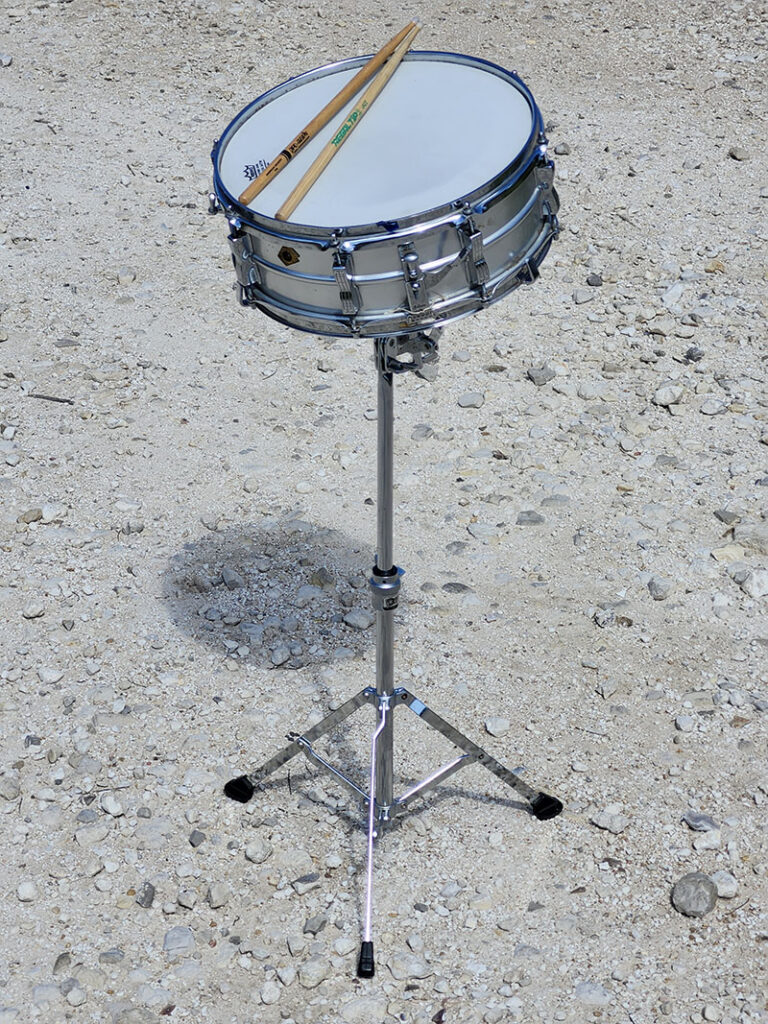 June 18, 2025
June 18, 2025
Ovid: If the art is concealed, it succeeds.
I’ve been contemplating where this statement manifests in our world.
For me, it is music. My go-to example of “less is more” is drums. Whenever I listen to a group I’ve not heard before, I notice if I notice the drummer.
Reversing the adage, the best drummers are heard and not seen. The goal on drums is to make the band sound better than if the drummer wasn’t there. I can’t define it, but I know it.
This is top of brain because for awhile I have been accompanying Duncan Holmes on piano and Horst Klauser on saxophone at the Officer’s Club. My instrument? A snare drum. That’s it. Unlike in my over-playing younger days, I leave all the Ludwig hardware back in the barn.
At first this made me nervous, as any drummer feels comfortable surrounded by at least five drums and as many cymbals. Using only a snare feels naked. But like Frank Zappa’s observation that most important thing in art is The Frame, forcing a drummer to use only one drum brings out the creativity. Only the art is concealed.
To flog my point, I will hereby reveal ways to conceal the art while playing one drum.
Vary the Volume
Playing softly sets the tone for the combo. Loud riffs are most effective when used sparingly.
Vary the Textures
Nothing ruins a performance than a drummer repeating the same sounds. While drumming is just slamming one object into another object, a snare drum offers a google map of topography from which to elicit tones.
The Snare Head, for example, has a middle, an edge, an edge near the dampener, an edge near the snare attachment, a spot midway between edge and middle, etc. Most drummers forget they have a bottom head on their snare. It is thin and transparent, and offers a different tone.
You can play the snare itself, those delicate coils of springs stretch from rim to rim. My favorite trick is to stroke the snare under the drum using a brush. It gives a satisfying sizzle, like a drum roll but lighter.
You can play on the rim. Or the drum stand. Or on the furniture in the room. I’ve tapped the stand as fill-in for a closed hi-hat when playing stand-alone snare.
Vary the Beaters
A creative drummer keeps a bagful of sticks
conventional sticks
nylon-tipped sticks
wire brushes
plastic brushes
dowel sticks
thick brushes
Every stick has two ends; each sounds different. Laying one end on the head and hitting the rim with the other.
Non-sticks
Like eating chicken, it’s OK to use your fingers!
Or a clave!
Use spoons back to back, or scrape a quarter across the tines of a fork or the teeth of a steak knife. I saw kids in Peru rub coins on ribbed Fanta bottles.
To go even more minimal, you don’t need any drum.
Play the furniture
I’ve been known to drag a stick down the louvered wooden slats behind me in a bar window
Slatted chair backs serve the same function.
Glasses and bottles
With different levels of liquid, a tabletop of glasses and bottles stands in for a xylophone. Don’t forget the glass candle holders. Live flame adds a Vegas-worthy element of risk!
The ultimate minimalism is…
Silence
This might be my most effective and powerful drumming technique. Sometimes I’m unsure which rhythm is called for in tune. Or there are certain tunes that sound better without drums. When that happens, I lay down my sticks and walk around the room. It’s OK to not play. In fact “not playing” might be my strongest musical skill.
Look into your own world, whether art, fashion, finance, or cooking. I’m sure you can come up with even better examples of the art of concealing your art.